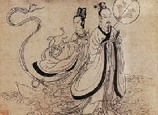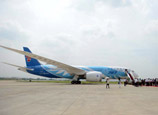
China's trade growth moderated sharply in May from strong expansions in the past two quarters, likely a result of the country's tightened controls on speculative money.
Exports increased 1 percent from a year earlier to US$182.7 billion last month, the General Administration of Customs said yesterday. This slowed from the jump of 14.7 percent in April.
Imports dropped 0.3 percent to US$162.3 billion, reversing the gain of 16.8 percent a month earlier.
They left a trade surplus of US$20.4 billion in May, compared with April's surplus of US$18.2 billion and March's deficit of US$884 million.
The figures surprised the market as market consensus forecast exports would grow 7.4 percent and imports rise 6.6 percent last month.
Customs said the steep trade moderation was caused by a combination of factors.
These included a weaker domestic economy; less external demand, higher operating costs; yuan's appreciation and a deteriorating trade environment. It highlighted the plummet of trade between the mainland and Hong Kong due to recent checks on the arbitrage trade to the nation's biggest offshore yuan market.
But Zhou Hao, an economist at Australia & New Zealand Banking Group Ltd, said the slowdown largely reflects the authority's efforts to crack down on activities that seek financial gains on large offshore and onshore interest rate differentials and the yuan's appreciation.
"China's trade growth crashed in May," Zhou said, noting that the abnormal surge of trade in the past months was the outcome of over-invoicing and round-tripping of goods with an intention to use trade to bring in hot money.
Since March, suspicions have emerged to question the reliability of the trade data as they were inconsistent with figures elsewhere as well as the overall economic performance in China that was weakening.
Zhou said the outlook of China's exports sector looks grim because of the loss of competitiveness due to a stronger yuan and the rising trade protectionism.
The European Union on Tuesday announced anti-dumping tariffs on imports of China-made solar panels, cells and wafers. This will lead to further deterioration of China's exports to its second-largest trading partner, Zhou said.
Lu Zhengwei, chief economist at Industrial Bank said the trade data gave the "show" away. "It's the first time this year the figures show their true colors," Lu said.
Shanghai's trade decreased 2.5 percent to US$172.1 billion in the year to May.


















![]()
